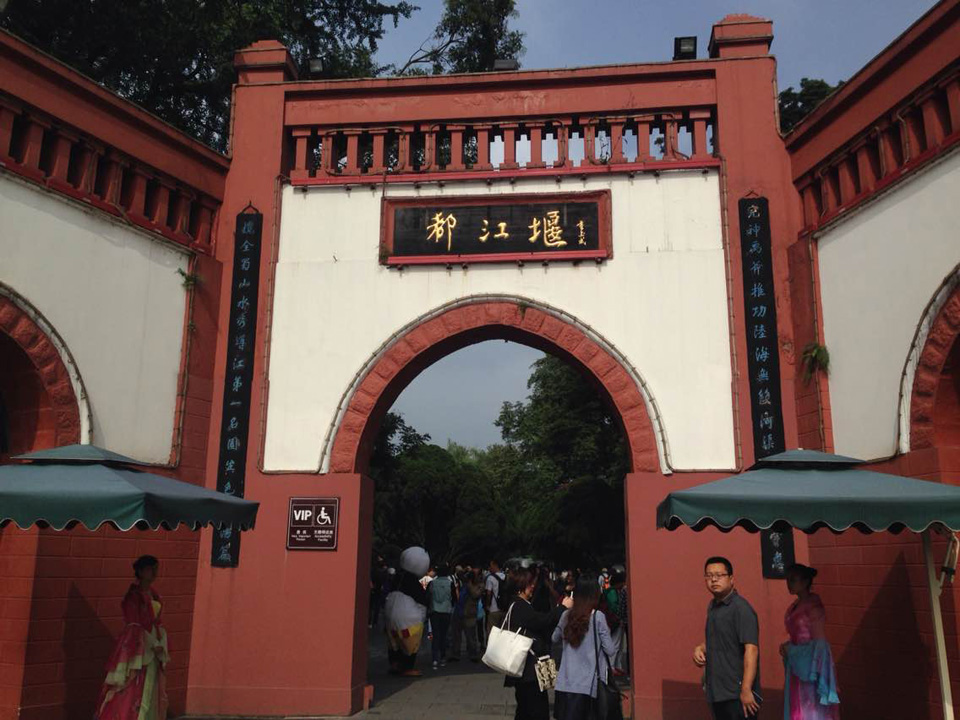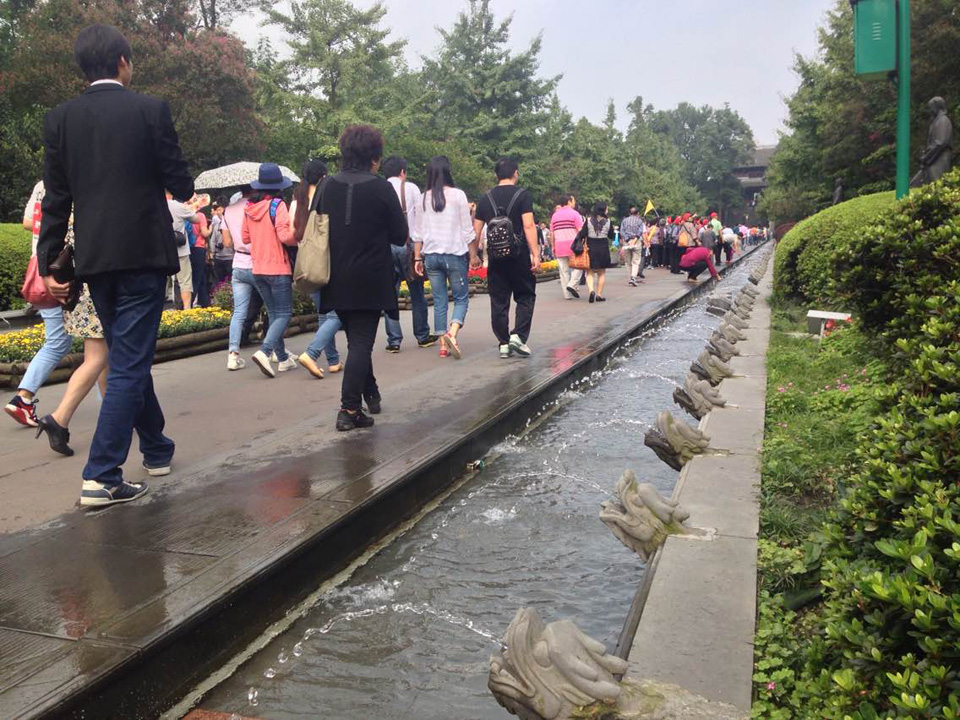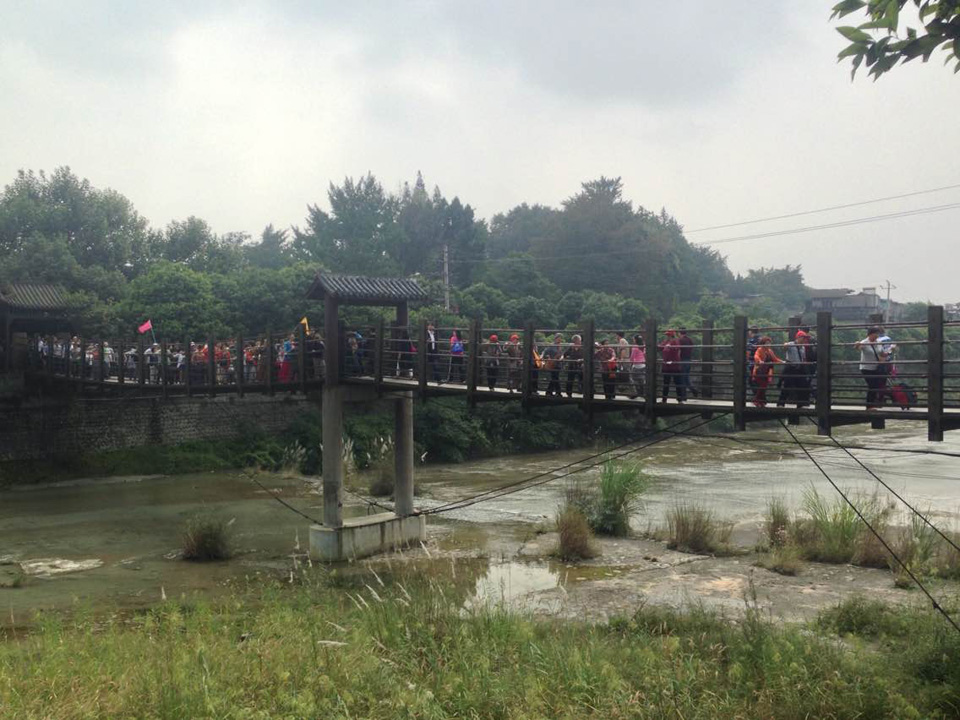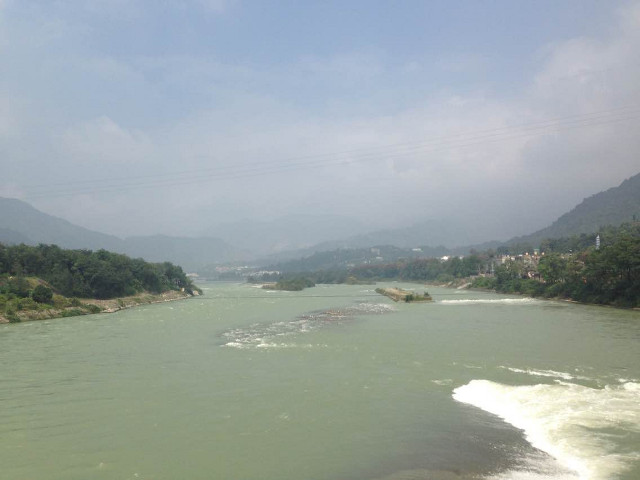Filtered By: Lifestyle
Lifestyle
At Dujiangyan, the ancient and modern meet where a river diverges
By JONATHAN DE SANTOS, GMA News

The entrance to the Dujiangyan Irrigation System. All photos by Amanda Fernandez
CHENGDU CITY, China — It is easy to mistake the Dujiangyan irrigation system, with its panda mascots dancing at the palatial entrance, for a theme park instead of what it really is: the ancient heart of Sichuan province.
The project, built 2,268 years ago and still operational, has helped give Sichuan—home of China's most abundant farmlands—the title of "Land of Abundance" and its people the reputation of being laidback and easygoing. The irrigation system was included on the UNESCO list of World Heritage Sites and has made Dujiangyan City a major tourist attraction.
The Dujiangyan system, UNESCO says, "graphically illustrates the immense advances in science and technology achieved in ancient China." The system uses natural bends in the river to direct the water without the use of dams. It, our guide from the Dujiangyan City government says, "does not force nature, but leads nature."
Our guide, who has never seen a flood in her city her entire life, says the project was started by one Li Bing—Shu Kingdom magistrate of the Qin Dynasty—in 256 BC because "it used to flood a lot" back then. The irrigation system, which has since been extended to cover 668,700 hectares of land.

This garden honors officials of ancient Sichuan who built and maintained the irrigation system.
Past the panda mascots—who will dance with you for free but will charge 10 yuan for posing for a picture with you—is a garden honoring the 12 officials of Sichuan province who extended and maintained the irrigation system.
The garden is filled with fountains and ponds fed by water from the Minjiang River, which is split by a millennia-old man-made island. The island took around 30 years of collecting river rocks, tying them in nets of bamboo, and piling them on top of each other to build, our guide says, and divides the river into a channel for irrigation and another where excess water is released to prevent flooding.
The flood control channel was dry when we visited, making crossing it on a swaying suspension bridge a slightly less harrowing experience.
"Don't worry. It looks like it is made of rope and wood, but inside there are steel cables," our guide reassures us as we cling on to the (secretly steel) guard rails. A troop of monks and nuns press past on the way to nearby Mount Quingcheng, the birthplace and spiritual center of Taoism.
"Don't worry. It looks like it is made of rope and wood, but inside there are steel cables," our guide reassures us as we cling on to the (secretly steel) guard rails. A troop of monks and nuns press past on the way to nearby Mount Quingcheng, the birthplace and spiritual center of Taoism.
The Feishayan spillway at the end of the man-made island can be reached by taking an electric minibus, which is a convenience and also demonstrates recurring theme in the irrigation project: Combining traditional methods with modern innovations.

One of many suspension bridges across the irrigation canals.
Although the irrigation system is essentially unchanged since the days of ancient China, UNESCO points out that "modern building materials and technology have been utilized to enable this ancient system to conform with the requirements of the present day."

The mouth of the Minjiang River
The Dujiangyan irrigation system might not be Disneyland—but surrounded by a city that sells iPhone 6s from buildings that look like they were built decades ago and that has bus stops that look like traditional Chinese arches, it seems just as magical and has helped make Sichuan province the happiest place on earth for many of its residents. — VC, GMA News
More Videos
Most Popular




